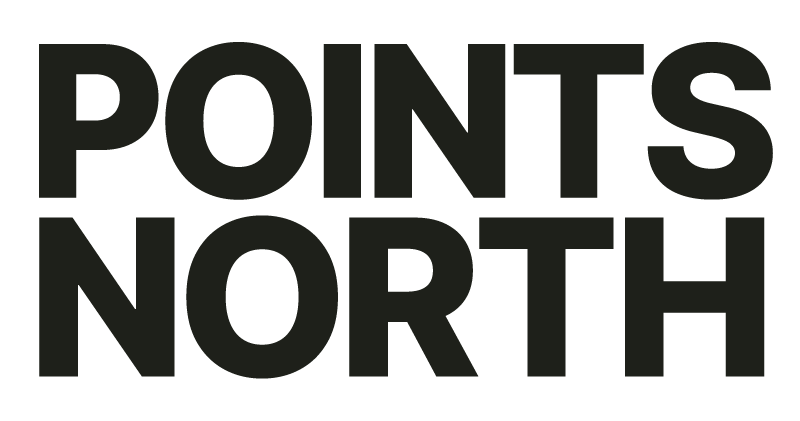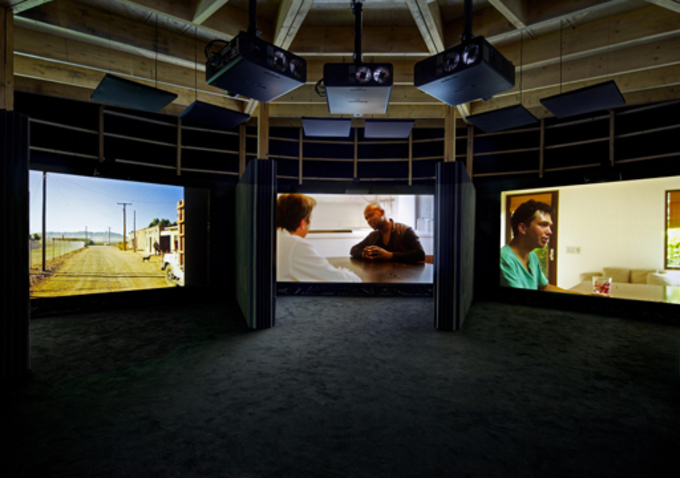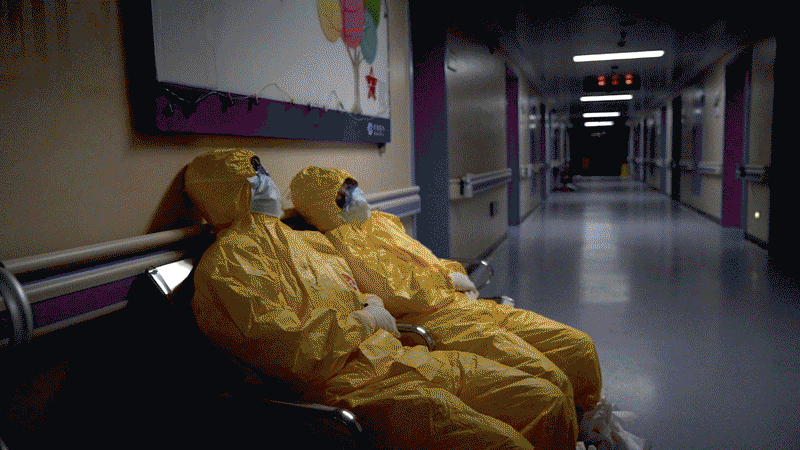CIFF’s Ben Fowlie, Caroline von Kuhn and Sean Flynn headed to Park City last month for the Sundance Film Festival. You can check out Sean Flynn‘s coverage for indieWIRE of Sundance’s New Frontiers program below as he asks us: Are Interactive Films Transforming Modern Storytelling?
Near the end of a panel discussion titled “The Story World: Creating Interactive Experiences That Work” – part of the Sundance Film Festival’s New Frontier program – Jonathan Harris cautioned aspiring new media storytellers to think about the tradeoff between timeliness and timelessness in their work. “Whenever you’re dealing with bleeding edge technologies, there is the trap that you’re just doing things that are very timely,” he said, “but in five years they just look kind of silly.” Harris went on to cite Michael Naimark’s distinction between “first word art” and “last word art”: First word art is experimental, rule-breaking, lacking in any predefined formal structure that allows us to compare it to other art of its time. Last word art, as Naimark explains it, is “virtuosity after the rules have been fixed.” These categories seem like a perfect way to frame the 2014 New Frontier exhibit, a small but growing part of an institution that has done more than any other to bring boundary-pushing independent film into the mainstream. In the footsteps of the festival that birthed it, New Frontier is creating a platform for films and interactive artworks that “expand, experiment with, and explode traditional storytelling,” often (though not always) with the help of bleeding edge technologies. As the time-honored tradition of watching films in a theater occupies a shrinking portion of our media-saturated daily lives, it seems appropriate that Sundance invest in nurturing a new generation of artists and storytellers who work in code rather than celluloid and invite the audience into their work as active participants rather than passive spectators. But at a festival still steeped in the established art of cinema, the question inevitably arises: Will any of these experiments in storytelling transcend the category of “first word art” and become the dominant forms of tomorrow? Or are they merely timely novelties whose relevance is tied up with the technologies that enable them? A fitting entry point into these questions was Doug Aitken’s “The Source (Evolving),” a six-channel video installation featuring 23 evocative, fast-paced conversations about creativity between Aitken and an eclectic cast of artistic pioneers from various disciplines and generations. The installation creates an immersive experience that begins with the viewer standing in the center of a 2,000 square-foot circular pavilion, surrounded on all sides by six looping projections and a cacophony of overlapping sound emanating from each. As the viewer moves toward one of the projections, short walls separating each screen bring the sound of that conversation into focus. The intention, according to Aitken, is to “allow the viewer to create their own narrative, to splice together a series of ideas” by moving through the space. One could imagine the same material being woven together into a feature-length documentary, but instead the artist chose to present these conversations in a way that is “unmediated and unfiltered,” so that each visitor experiences them in a slightly different order and duration. In this sense, “The Source (Evolving)” might be labeled a “database documentary,” an emerging interactive genre that was on display in a variety of forms at New Frontier. Another approach to database documentary was found in Jonathan Harris’ “I Love Your Work,” a project built around an elegant web interface that invites users to explore the lives of nine women who make lesbian porn in New York City. Similar to one of his previous pieces, “The Whale Hunt,” Harris began shooting with a strict set of rules, shadowing each of his subjects for a 24 hour period and capturing a 10 second clip every five minutes during their waking hours. The resulting six hours of raw footage is arranged in a chronological timeline that users can watch in sequence or access at random. The project’s brief pornographic scenes are framed by a far greater quantity of moments from the women’s everyday lives. We see them crawling out of bed, making breakfast, riding the subway, dancing, smoking in parking lots, and at times making confessions to the director that hint at deeper conversations. Appropriate to the subject matter, these mundane moments tend to conceal as much as they reveal, offering abbreviated 10-second windows into the subject’s lives that are at once intimate and abstract. Perhaps most striking about this algorithmic approach to storytelling is that there is no director commentary, no central narrative that ties the women’s lives together, no big documentary lessons to be learned. Harris characterizes it as an “experiment with story DNA,” a tool to unearth “sub-stories” within a larger narrative. In this sense, the experience of navigating “I Love Your Work” places the user in a role akin to the documentary editor sifting through raw footage, looking for a story to emerge. Yet even in the absence of a traditional storyline, we can find voyeuristic pleasure (and meaning) in the opportunity to gaze momentarily into the daily lives of others. The biggest attraction at this year’s New Frontier was undoubtedly the cluster of projects utilizing the new Oculus Rift virtual reality system. From the moment the exhibit opened to the public, these stations were crowded with enthusiastic technophiles lining up for a chance to try on the headsets. One of the VR experiences on offer was “Sound and Vision,” a 10-minute Beck concert film directed by Chris Milk and designed specifically for the Oculus. The film places viewers inside a large circular soundstage filled with concentric rings of audience members and performers, allowing them to explore a complete spherical field of view using only natural head movements. Viewers can switch between three camera positions at any time, swiveling their heads to see and hear the performance from different angles. The sensory effect of exploring a screen without edges is uncanny, but also uniquely exhilarating. The performance comes to life in a way unimaginable with linear films played back on a rectangular screen, an idea that may one day seem antiquated. During the “Story World” panel, Milk – a veteran of both traditional and interactive music videos – came across as a true believer, claiming that “VR is the next great platform for humanity to tell stories in.” Kamal Sinclair, Senior Manager of the New Frontier Story Lab, described 2014 as a tipping point year for the program – a result of expanding support within the Institute and “a huge jump” in the number of people that make New Frontier part of their festival experience. Is such growing interest a sign that interactive films are on track to fundamentally transform storytelling as we know it? A common refrain at New Frontier seem to refute this notion. “This isn’t about replacing film by any stretch,” claimed data artist Aaron Koblin. “You can lose yourself in a very different way in a non-interactive film.” It may be too soon to tell whether any of these new forms will reach the institutional status of cinema, but what does seem clear is that a new horizon is opening up in interactive media, creating entirely new ways to look out at the world and lose ourselves in the experience of a story.



